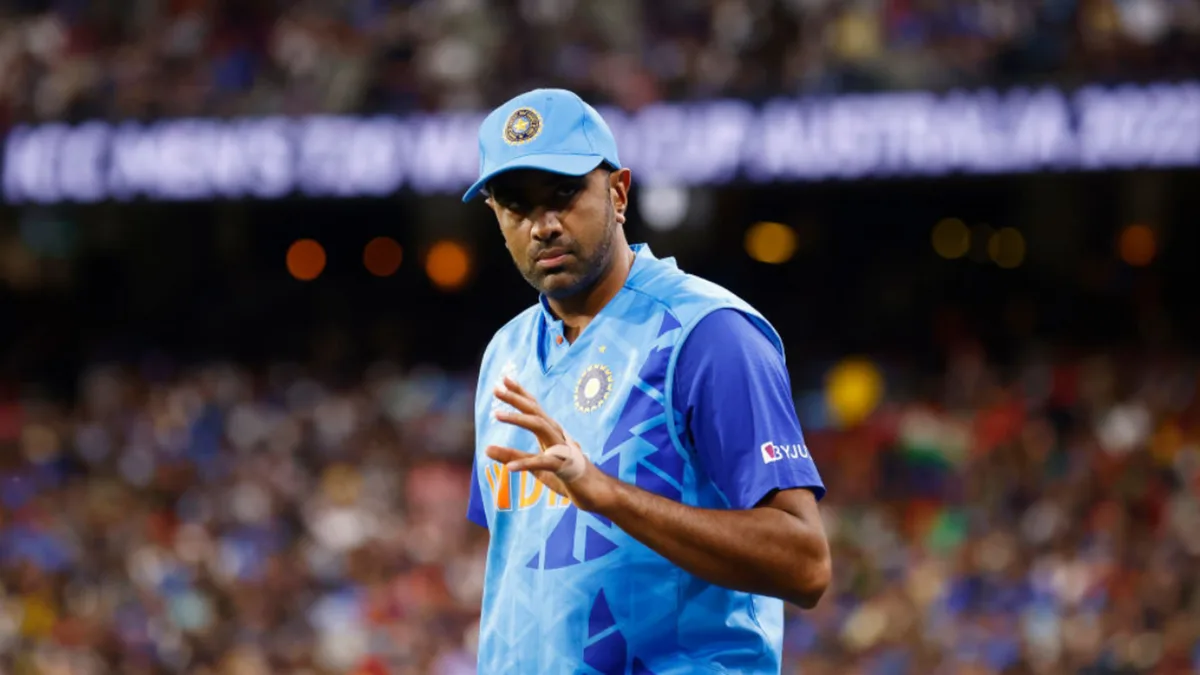
Ravichandran Ashwin has been recalled to the ODI side after more than a year and a half. While contentious, the move is not as controversial as it might seem, writes Naman Agarwal.
To bet on the World Cup with our Match Centre Partners bet365 head here.
Ashwin has taken 151 wickets in ODIs. Only four other Indian spinners have taken more wickets in the format than him. However, only one of those has come since 2018 and only 11 since 2016, which is why his sudden recall ahead of an all-important home ODI World Cup has raised eyebrows.
Ashwin’s call-up was necessitated after Axar Patel was injured during India’s Asia Cup clash against Bangladesh. With India having made their intentions of not compromising with batting depth clear, they were left with only two options for spin-bowling all-rounders – Washington Sundar and Ashwin.
Both have found their way into the squad for the Australia series, and will essentially be locked in for a battle for the third spinner’s slot at the World Cup in case Axar doesn’t recover in time, or the fourth spinner’s slot in case he does.
Sundar’s call-up for the Asia Cup final gave the indication that he might be ahead of Ashwin in the pecking order, but Rohit Sharma clarified that he was chosen because he was the one who was available at such short notice, and that doors are open for either of them.
[breakout id=”0″][/breakout]
This is not the first time that Ashwin has found himself in the scheme of things just ahead of an ICC white-ball tournament. Having not played T20Is for four years before the 2021 T20 World Cup, Ashwin was selected as a first-choice spinner for the event. Similarly, in the 2022 T20 World Cup, he played every game ahead of Yuzvendra Chahal.
And now, having played just two ODIs in the last five and a half years, Ashwin is on the verge of an ODI World Cup spot. India have tried to move beyond him in limited-overs cricket, but something keeps bringing them back to Ashwin for the big tournaments.
A lack of budding off-spinners in the country might be one factor, but his experience and ever-evolving nature as a cricketer which helps him stay relevant in modern-day cricket are perhaps the defining ones.
[breakout id=”0″][/breakout]
Ashwin has featured in each of the last two World Cups played in India – the 2011 ODI World Cup and the 2016 T20 World Cup. In the former, he played two games and took four wickets at 23.2, while in the latter he took four wickets from five games at an economy rate of 7.6. Neither figures are extraordinary nor are indicative of how good he could be in the upcoming World Cup. But it gives the team management the cushion of knowing that he has played at the biggest of stages in similar conditions, a luxury that Sundar doesn’t provide.
While Ashwin has not played a lot of international white-ball cricket lately, he has been in decent rhythm in whatever domestic white-ball cricket he has played. He had a good IPL season earlier this year, where he took 14 wickets (his highest wicket tally in an IPL season since 2019) from 13 games at 26.2 and an economy rate of 7.5. After that, in the Tamil Nadu Premier League, he took four wickets from four games at 28.5 apiece and conceded 7.1 runs per over.
Sundar, on the other hand, has been plagued by injuries and has struggled to get into any sort of rhythm with the ball this year. In the IPL, he took three wickets from seven games at 8.2 runs per over, while in the TNPL, he took one wicket from six games at 8.5 runs per over.
Frequent promotions in the batting order by Rajasthan Royals have meant that Ashwin’s white-ball batting has evolved as well. In the last two IPL seasons, he has scored 258 runs at an average of 19.8 and a strike rate of 138.7, having previously scored at an average and strike rate of 11.1 and 109.9 respectively in his IPL career. These numbers might be from a different format, but they give a fair idea that Ashwin can hold his own as an ODI No.8 if required.
[breakout id=”0″][/breakout]
The definitive factor that Sundar has in his favour over Ashwin is the fact that he has a better batting pedigree and can be floated up the order as a left-hander to counter spin. Conceptually, it makes sense, but in reality, Sundar hasn’t proved his white-ball batting credentials against spin so far.
In ODIs, he averages 18.25 against spin and strikes at 73, while in T20s, those numbers read 18.5 and 96.1. From a potential floater to be used specifically against spin, you’d want much better numbers.
India would ideally want Axar to get back to full fitness before the deadline for the final squad announcement – September 28. If he doesn’t, they will have a tough choice to make between Ashwin and Sundar based on just the three upcoming games against Australia.
The venues for the Australia series – Mohali, Indore, and Rajkot – aren’t ideal for spinners, and it wouldn’t be a surprise if both Ashwin and Sundar struggle against the strong Australian batting lineup, particularly if the surfaces on offer are characteristically flat, which would make the choice even tougher for the selectors.
Currently, Ashwin may seem like the riskier pick between the two of them from the outside. But if he does somehow manage to find himself playing a third successive white-ball World Cup despite not playing much international white-ball cricket otherwise, it wouldn’t be without reason, and it wouldn’t be the worst thing for India.








